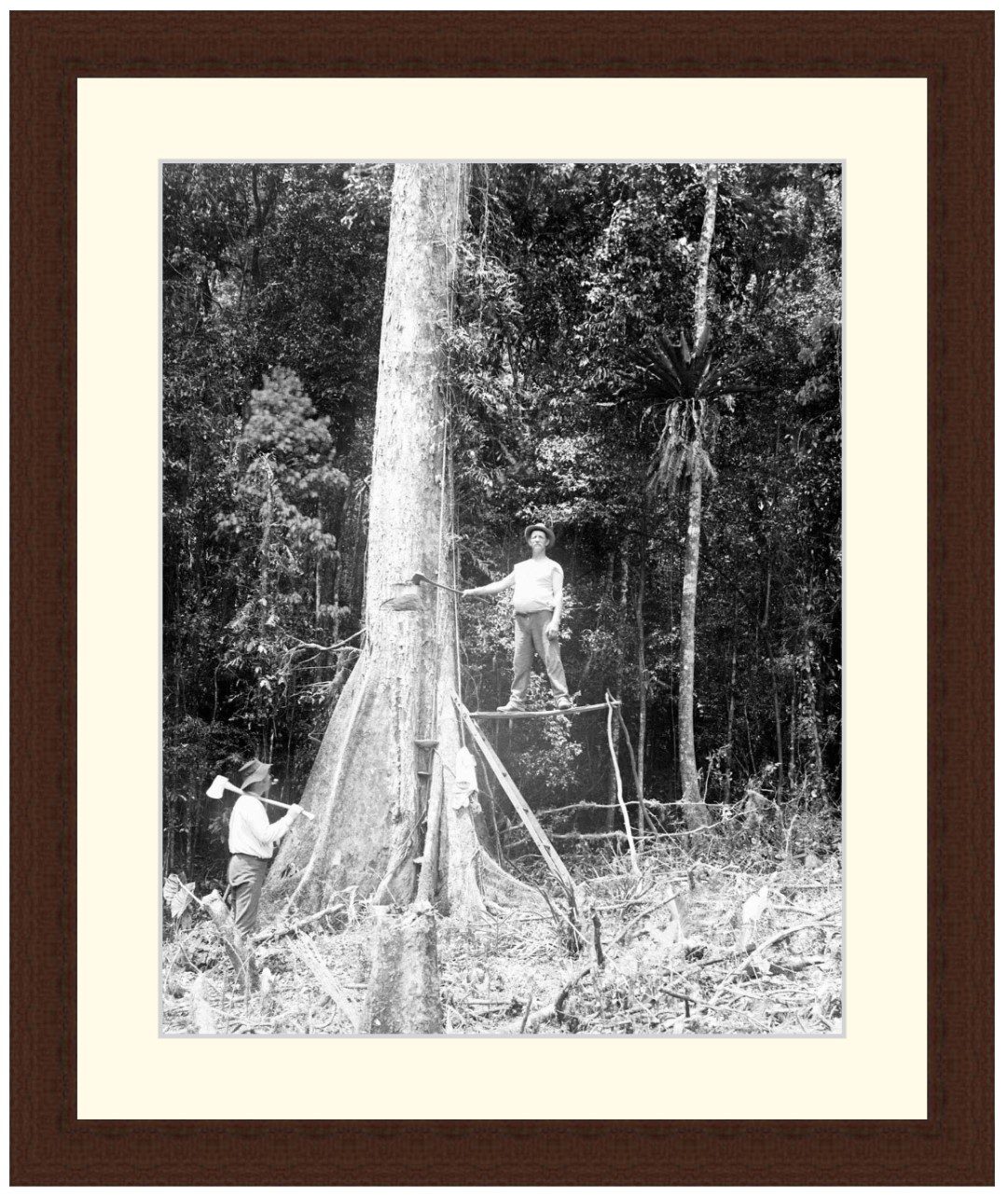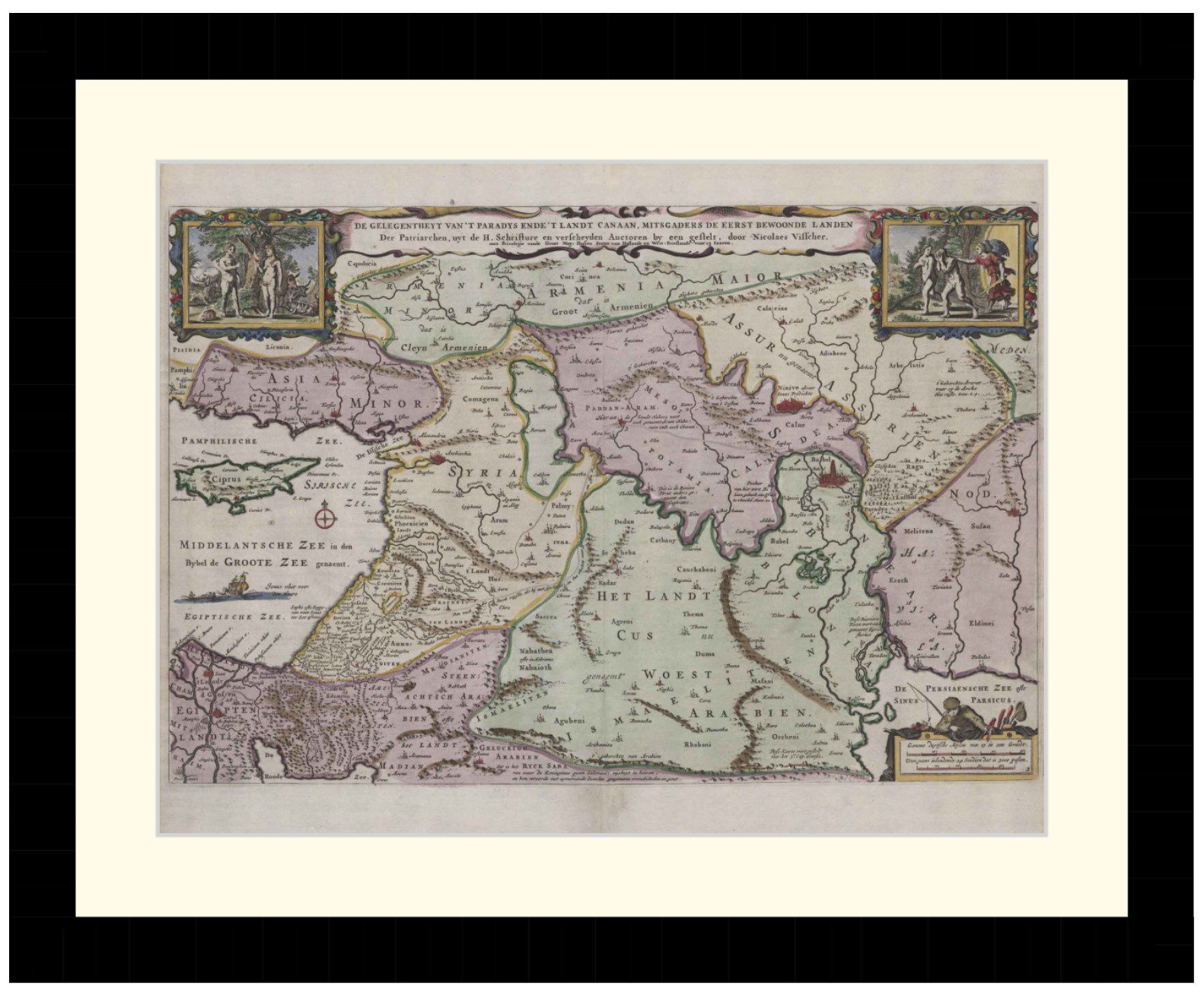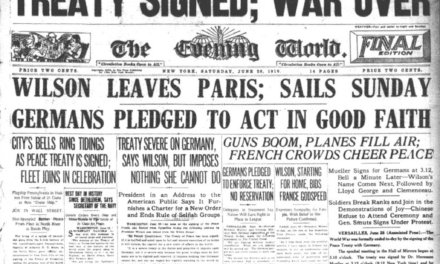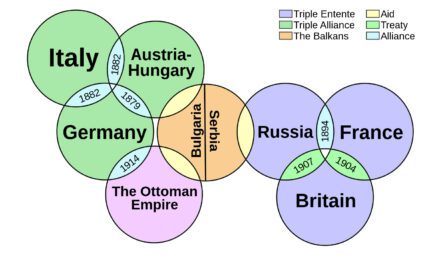Reading time: 7 minutes
In September 1939, as German armies overran large swathes of Poland far to the east, the French launched an offensive of their own. Their goal was to capture the Saarland, the area between the French border and the German Siegfried line and force the Germans to transfer divisions away from Poland. The Saar Offensive of 1939 had begun.
By Nathan Drescher
Spread throughout the small forests, hills and villages of the Saarland was the German 1st Army with 22 divisions, defending an area of more than 200 square kilometers. They had been stripped of most of their heavy equipment and vehicles for the offensive against Poland and relied instead on the natural terrain of the region for defense.
Spearheading the French attack were eleven divisions of the Second Army Group. At the tip of this group was the French 32nd Infantry Regiment, and in front of them was the vital Warndt Forest, a key defensive feature on the right flank of the German defenses for the entire Saarland.
Unlike in 1914, when France had rallied to the cause with parades and patriotism, the war of 1939 seemed far away. “Why die for Danzig?” was a popular anti-war slogan muttered across the country. The slaughter of Verdun and the destruction of the Western Front had sapped the French of any desire for another bloody conflict. When General Maurice Gamelin launched his offensive into the Saar four days after the beginning of the war, there was little fanfare.
France in 1939
The French army of 1939 was powerful on paper but woefully outdated. Most of its soldiers were reluctant conscripts. Its officers were still committed to fighting the Great War with outdated tactics.
There were logistical problems plaguing the French army. A vast bureaucracy had sprung up in the intervening years between the two wars, making the procurement and transportation of equipment for the army a long and confusing process. French artillery was still drawn by horses and could not move quickly. Many of the cannons were stuck in warehouses, and some in museums.
The average French citizen held no love for the Germans, but they didn’t want to repeat the slaughter of 1914-1918. By late August and the eve of the Second World War, the French government had drawn up plans for a quick offensive into the Saarland to relieve pressure on the Poles. The German strike on Poland was expected at any moment, so when it came on September 1st, 1939, no Frenchman was surprised.
The Third, Fourth and Fifth French armies had 40 divisions between them. These were supposed to form the backbone of the offensive. Marshall Gamelin, a hero of the Great War, was in overall command of the 1939 Saar offensive, named simply “The Saar Operation.”
Gamelin’s armies were still being equipped and organized when France declared war on Germany on September 3rd. While the world waited for an expected massive offensive across the border into Germany, nothing happened. The logistical problems plaguing the French army would ultimately help the Germans.
The German 1st Army in 1939
Hitler had depended on ruses for many of his successes up to this point. He had gobbled up Austria and Czechoslovakia using the threat of mighty armies he didn’t possess. The powerful 1st Army defending the Franco-German border was another one of his ruses.
The 1st Army was under the command General Erwin von Witzleben, a hero of the Great War who had won an Iron Cross in Flanders. His 1st Army had been cannibalized to arm and equip the two army groups attacking Poland and he was left with just over 100,000 men and only 100 artillery guns to defend the entire border. He had no armour, no anti-tank guns, and no air support. Most of his machine guns were the older water-cooled Maxims from the last war.
What he did have were 21 divisions of infantry and one division of cavalry. Von Witzleben organized a system of independent commands right down to the platoon level that would allow him to spread his small army across the region. They would use natural obstacles such as woods and rivers. The much-vaunted Siegfried Line would be their fallback point.
His men were in high spirits. They were well-trained and well-led. Morale was high among the German people in 1939 and there was a feeling of invincibility among the troops.
The offensive begins
The Saar Offensive began on September 7, 1939, with 11 divisions crossing the border and advancing along a 32 km front towards the city of Saarbruken. They met no resistance. Not a shot was fired. They captured 12 German towns on the first day of the offensive, whose inhabitants stared curiously at the French troops but otherwise ignored them.

The going was slow, and they only advanced eight kilometres in the first 24 hours. Resistance picked up on the second day. Four French Renault R35 tanks were lost when they drove through a minefield near the town of Bliesbruck.
The leading elements of the 3rd French Army managed to cross the Nied River on the first day and approached the Warndt Forest. The French 32nd Infantry Regiment ran into stiff resistance as they attempted to seize the forest. They had to fight their way into the forest, which took them a full day and night. The entire forest was in French hands by September 9th, but the Germans counter attacked as dawn broke on the 10th. The French were pushed out of the forest village of Apach and attacked again to recapture the town. On September 12th, the 32nd pushed into the town of Brenshelbach.
Elsewhere along the front, the French offensive was barely moving forward. Logistical problems and a wariness of the losses suffered in the last war kept the French moving slowly. They never reached the Siegfried Line.
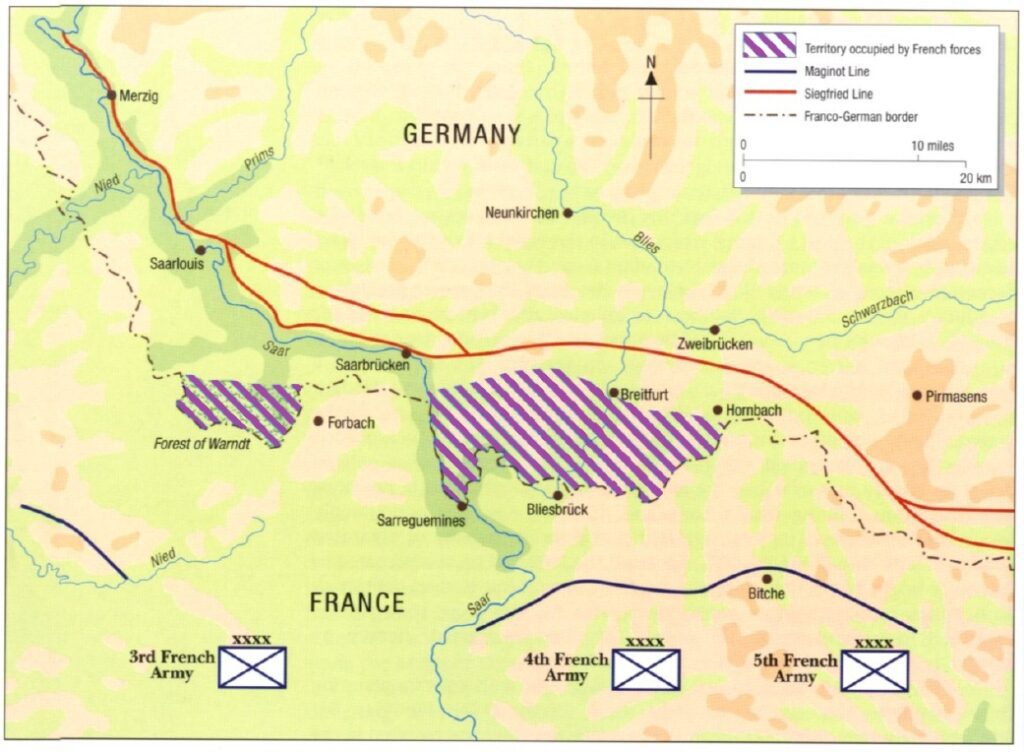
The withdrawal is sounded
Poland surrendered on October 6th, 1939, and Marshall Gamelin suddenly found himself facing the prospect of the bulk of the German army turning on him. On October 7th, he ordered all units to withdraw back to the Maginot Line in an orderly fashion.
Von Witzleben took this opportunity to launch a series of harassing counterattacks along the front. The 52nd Division struck the French near the town of Ommersheim and were repelled only after several hours of heavy fighting.
The bloodied 32nd Infantry Regiment fought rearguard actions against increasing German pressure as they withdrew. The entire withdrawal was over by October 17th and the French units were safely dug in along the Maginot Line once more. The Saarland was completely back in German hands.
Aftermath
The full weight of Gamelin’s 40 divisions never took part in the Saar Offensive in 1939. He committed only 11 divisions to the actual operation and took only 32 square kilometers of ground. They failed to achieve any of their objectives.
The French suffered more than 2,000 casualties and lost four tanks in the Saar Offensive. The Germans lost just under 700 men.
More importantly, no German units were pulled away from Poland. There is debate over whether France could have done anything in the Saarland to change the situation in Poland. They had the numbers and the tanks and the aircraft. However, given the state of logistics and leadership in the French Army in 1939, it is unlikely they could have sustained a full invasion of Germany.
The bloody 32nd Infantry Regiment that had led the offensive would soon be fighting for its life once more as it held the perimeter around Dunkirk from German Panzers.
Podcasts about the Saar Offensive
Articles you may also like
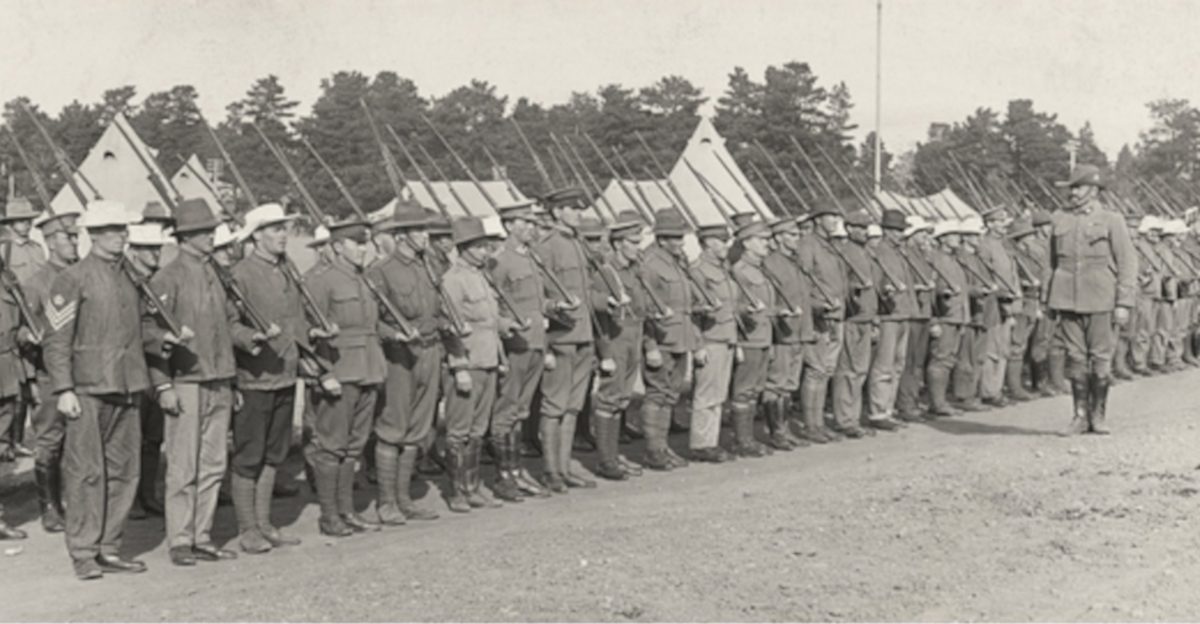
Slavery at home? The Australian Conscription Referendums of WWI
Reading time: 11 minutes
On 31st July 1914, just days before the catastrophe of war was allowed to come to Europe, Australian Prime Minister Andrew Fisher made a solemn promise on behalf of his country to “stand beside the mother country to help and defend her to our last man and our last shilling.”
But as the months passed as the fighting ground on, and as stories of the horrors endured in Turkey and France trickled back to the home front, Australia’s young democracy faced one of its most harrowing trials yet as those on both sides of the issue battled to determine the path ahead.

Between the Lines – Audiobook
This book, all of which has been written at the Front within sound of the German guns and for the most part within shell and rifle range, is an attempt to tell something of the manner of struggle that has gone on for months between the lines along the Western Front, and more especially of what lies behind and goes to the making of those curt and vague terms in the war communiqués. I think that our people at Home will be glad to know more, and ought to know more, of what these bald phrases may actually signify, when, in the other sense, we read ‘between the lines.’

Forget ‘Man the Hunter’ – physiological and archaeological evidence rewrites assumptions about a gendered division of labor in prehistoric times
Reading time: 8 minutes
Prehistoric men hunted; prehistoric women gathered. At least this is the standard narrative written by and about men to the exclusion of women. The idea of “Man the Hunter” runs deep within anthropology, convincing people that hunting made us human, only men did the hunting, and therefore evolutionary forces must only have acted upon men. Such depictions are found not only in media, but in museums and introductory anthropology textbooks, too.
The text of this article was commissioned by History Guild as part of our work to improve historical literacy. If you would like to reproduce it please get in touch via this form.



